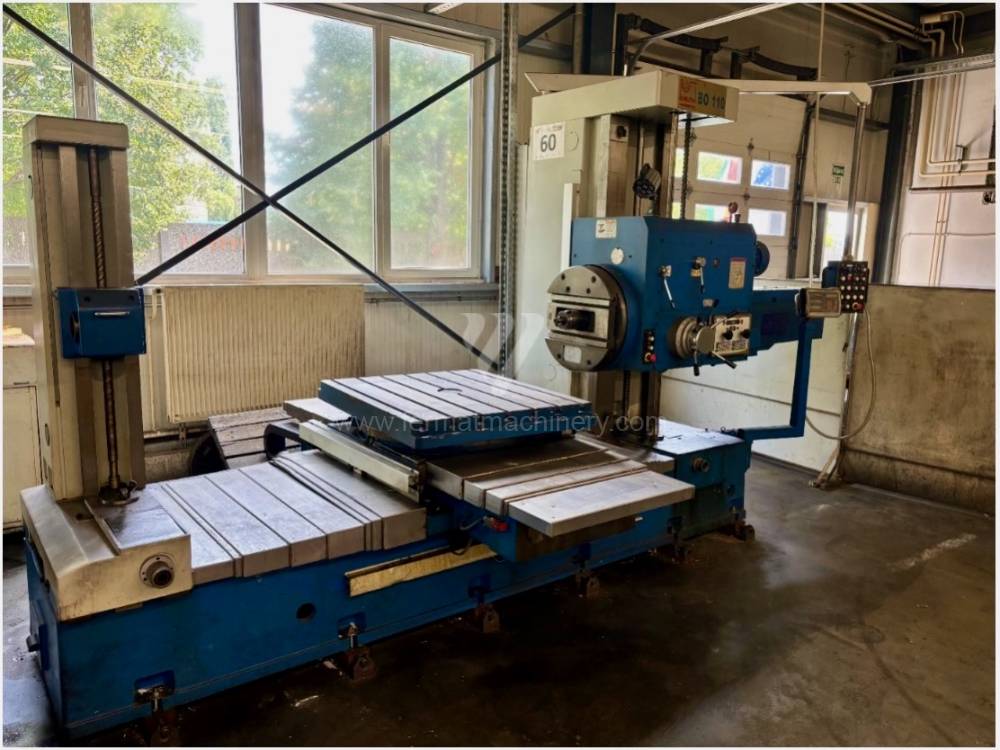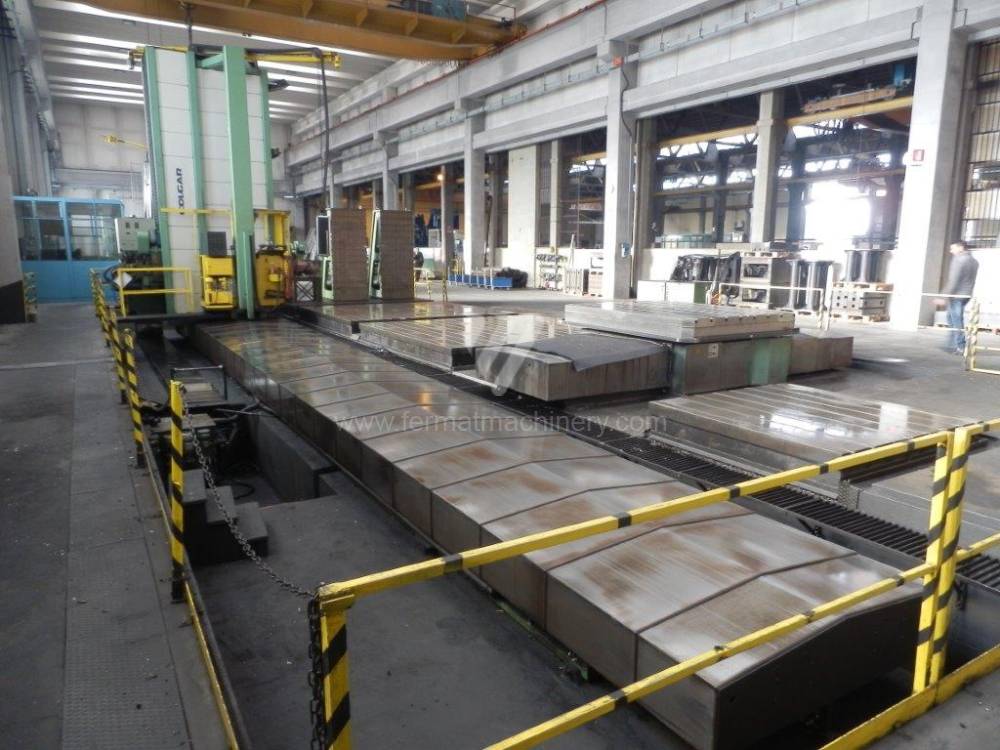Proche
| Nom du produit | NUMERO D'INVENTAIRE | Fabricant | Année de production | Paramètres | ||
|---|---|---|---|---|---|---|
 |
BO 110 |
241996 | KNUTH Werkzeugmaschinen GmbH | 2013 | Diametre de travaille de broche: 110 mm Course X: 900 mm Course Y: 900 mm Vitesse de broche: 8 - 1000 /min. Refroidissement par axe: NON Extension du curseur (W): 600 mm |
|
 |
FRAL 70C16 |
241059 | Colgar International S.r.l. | 1989 | Système de contrôle ECS: Diametre de travaille de broche: 160 mm Course X: 15500 mm Course Y: 1000 mm Vitesse de broche: 0 - 1500 /min. Extension du curseur (W): 800 mm |
Horizontal boring machines are universal machines used for machining of complex products. These borers are mainly used for small batch production. For one workpiece clamping, the operation can be performed from up to five sides, either simultaneously or sequentially. A large number of standard and special accessories are available for horizontal boring machines. This makes boring machines suitable not only for boring, but also for drilling, turning, milling and other operations.
Horizontal boring machines can be divided into several types, such as: table, cross, plate, coordinate. Can be divided also according to the type of control - conventional (without system), or CNC controlled.
Table boring machines are equipped with a movable table that moves in one or two axes. Depending on this, boring machines are further divided into cross-construction or T-construction. The table is usually rotary (B axis), which allows four sides of the workpiece to be machined in one clamp. However, if the machine is equipped with an angle head (A and C axes) and the workpiece does not exceed the dimensions of the machine, five sides can be machined in one clamp. The boring milling machines differ from the table milling machines in particular by the extendable spindle (W axis). Higher series often also have a movable headstock (V axis).
These kinds of boring machines are suitable and used for machining of the largest workpieces. Headstock is moving along the vertical guide of the column and column itself is moving along the bed perpendicular to the axis of the spindle. The workpiece is clamped immovably on a cast-iron floor plate equipped with T-slots. If this floor type boring machine is equipped with a rotary table which is movable in the direction of the spindle axis, the number of controlled axes increases. Such boring machines mainly have a boring spindle diameter of 130-315 mm.
So-called coordinate boring machines are used for machining precise holes. Its design is affected by the requirements for very high accuracy of all movements, good dynamics and the best possible temperature stability. There are two types of these machines. One-column borer with horizontal or vertical spindle axis (this is for smaller sizes of workpieces that are clamped on a cross table) and two column borer with one or more vertical spindles. Workpiece is clamped on a longitudinal table, which is in between two columns along which the crosspiece carrying the work headstock moves. An optical system is usually used for measuring. More modern machines are then equipped with a CNC control system.
All types of horizontal boring machines are conventional or CNC controlled. Among the most popular producers of CNC systems are Heidenhain, Siemens, Fanuc, Fagor.
Horizontal boring machines can be also equipped with automatic tool change which is primarily used for storage of tool holders, its manipulation and positioning without participation of human factor.
Among the main and most popular manufacturers of boring mills we have to mention: FERMAT, TOS, ŠKODA, PAMA, UNION, JUARISTI, SCHARMANN, KURAKI, WOTAN.